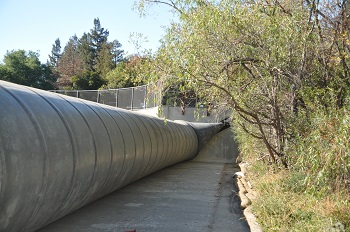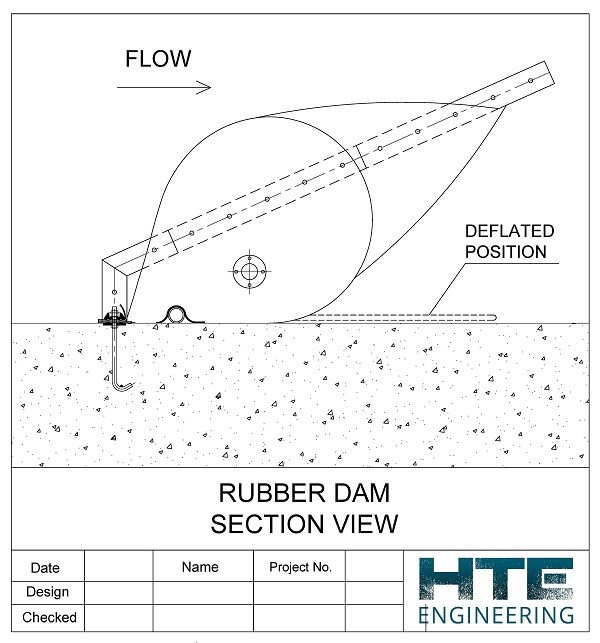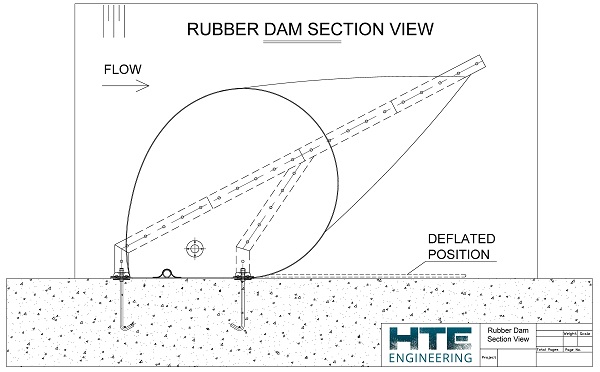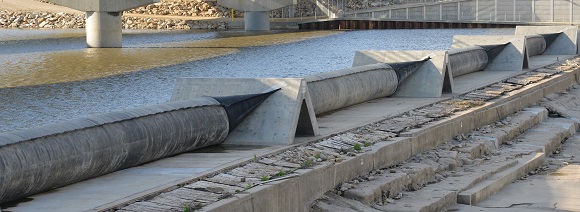Rubber Dam Systems
A rubber dam is a flexible rubber bladder which is permanently anchored to a reinforced concrete foundation. Rubber dams are water controlling structures that can be inflated by air or water. When the bladder is deflated, impounded water is released and the bladder becomes virtually flat. Inflatable rubber dams are used in a wide variety of applications, including irrigation, water storage, power generation, flood prevention and control, erosion control, groundwater recharge, tidal barriers, navigation, and sewage treatment.
HTE is known worldwide for its rubber dam services, including rubber  dam manufacturing, material testing, design, construction, installation, and maintenance services. We also provide rubber dam replacement equipment for dams that have reached their expected service life. Our industry-leading supply team has built over 1,200 rubber dams worldwide since the 1970s.
dam manufacturing, material testing, design, construction, installation, and maintenance services. We also provide rubber dam replacement equipment for dams that have reached their expected service life. Our industry-leading supply team has built over 1,200 rubber dams worldwide since the 1970s.
HTE understands the demands of today’s manufacturing environment and is committed to helping our clients with cost control and schedule compliance from the initial concept design through installation and commissioning. We also provide excellent after-sales services.
HTE has supplied rubber dams across the United States – from New York to California. We have worldwide rubber dam installations reaching up to 18 feet high and spanning sectioned widths over 3,500 feet. Because our rubber dams are so versatile, they have been installed for a variety of applications in very diverse climates and at varying elevations. Our team can easily mobilize to cover projects in any location.

Competencies – Our core competencies include:
— Free cost estimate
— Customized design
— Strength and durability testing of rubber products
— UL Certified Control System
— Installation supervision
— Maintenance and replacement
Advantages – The advantages of HTE’s Rubber Dams include:
—Considerable savings on cost of materials
—Construction and installation are much quicker and simpler compared to conventional gate structures
—Low comparative operation and maintenance costs
—Rubber dams can be fully deflated to pass high flows without any obstruction
—Simple and inexpensive operating system
—Rubber dams are high volume / low pressure systems, so high pressure compressors are not needed
—Rubber dams do not have leaking seals that tend to be an issue with other gate structures
—Rubber dams work well in cold temperatures – no need to de-ice, no jamming of mechanical parts
—No lubrication of moving parts, no painting required
—A rubber dam can easily adapt to potential differential settlement of the foundation
—Easily absorbs impact, shock, and vibration




